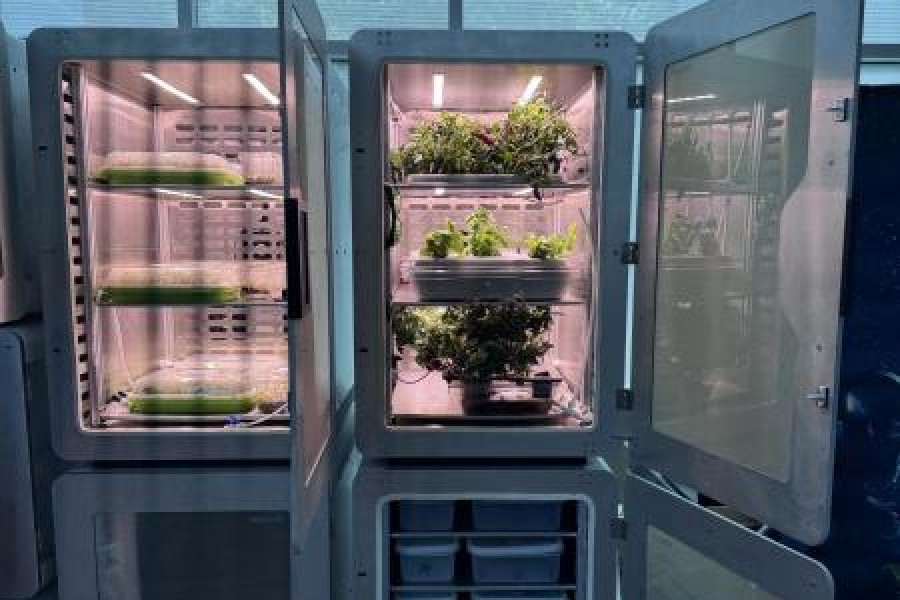An experimental technology may enable plants to grow in the dark in multi-storeyed farms, cut the need for cultivable land by over 80 per cent and transform how humans practice agriculture, a group of scientists predicted on Wednesday.
The technology called electro-agriculture is an alternative to photosynthesis that could help free cropland for ecological restoration, bolster weather-resilient cultivation, and prevent spikes in food prices, the four-member team said in a paper published in the scientific journal Joule.
Photosynthesis is the process through which plants turn absorbed sunlight into chemical energy for their growth. Electro-agriculture seeks to replace photosynthesis with a solar-powered chemical reaction that converts carbon dioxide into a molecule called acetate that plants will be genetically engineered to consume and grow in the absence of sunlight.
“If we don’t need to grow plants with sunlight anymore, we could grow food in controlled, indoor environments,” said Robert Jinkerson, an associate professor in the chemical and environmental engineering department at the University of California, Riverside, and a team member. “We could decouple agriculture from the environment,” he said in a media release.
Photosynthesis has an extremely low energy conversion efficiency — only about one per cent of the energy from sunlight absorbed by a plant is turned into chemical energy. The aim of electro-agriculture is to boost this efficiency through a different process, said Feng Jiao, an electrochemist at Washington University, St Louis, another co-author of the paper.
The concept — still distant from reality — would involve replacing agricultural fields with multi-storey buildings. Scientists estimate that a typical electro-agriculture structure will have three to seven storeys, the height of each floor depending on the crop being grown.
Solar panels would power a chemical reaction between carbon dioxide and water to produce acetate. The researchers, who have already genetically engineered plants to feed on acetate in addition to photosynthesis, are hoping future engineered plants will obtain all their energy from the acetate.
“We’re in the research and development phase trying to get plants to utilise acetate as their carbon source because plants have not evolved to grow this way,” Jinkerson said. “But we’re making progress. Mushrooms, yeast, and algae can be grown like this today… Other plants will come later down the line.”
The scientists are currently studying tomatoes and lettuce but plan to expand their work on high-calorie staples such as sweet potatoes, cassava, and grain crops in the future.
Two years ago, Jinkerson and his colleagues demonstrated “proof-of-concept” through a four-fold improvement in energy efficiency over photosynthesis. Despite such progress, the scientists caution that the technology will likely face key hurdles to commercialisation.
“The technology readiness level is too low to accurately assess production cost, but given the relatively low market price of staple crops, it will be difficult for electro-agriculture to be economically deployed at scale in the near future,” the scientists wrote in their paper.
In the near-term, the researchers said, electro-agriculture may find use in scenarios — such as space missions — where it is too difficult to produce food via photosynthesis. The technology also requires large amounts of electricity.










